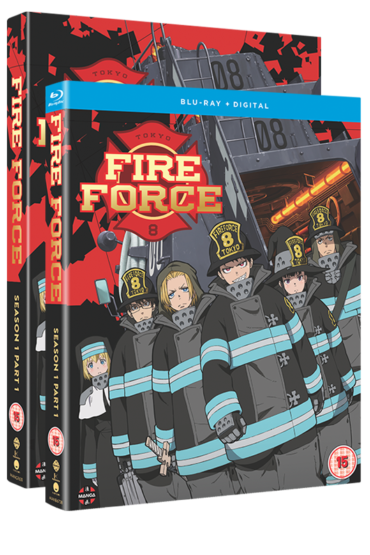Fire Force Season 1 Part 1 Review
250 years ago, the Great Disaster saw the world plunged into chaos as people suddenly began spontaneously combusting: bursting into flames and becoming what was soon to be known as Infernals. In Tokyo, while the rest of the world was consumed by fire, the survivors hung on, powered by Haijima Industries’ new thermal power plant, Amaterasu, and driven forward by their faith in the sun god, the Holy Sol.
In order to combat the Infernals and save people from the terror of spontaneous human combustion, the Emperor created the Special Fire Force: seven elite units mostly comprised of those who have the power to either control or generate flames through pyrokinesis.
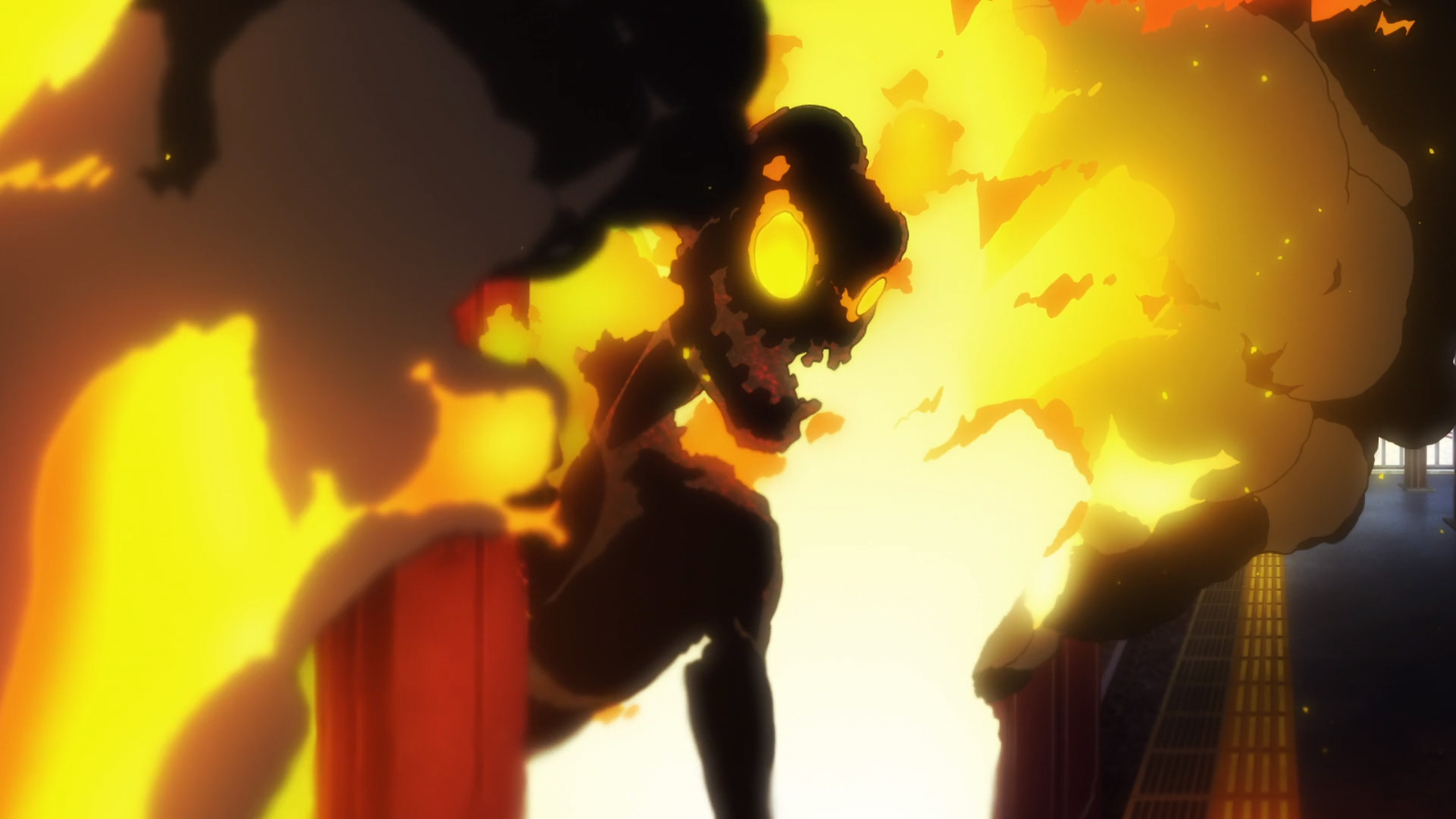
17-year-old Shinra Kusakabe is a third-generation pyrokinetic with flaming feet who, as a child, witnessed his mother and younger brother being burned to death in a mysterious fire that he thinks was started by a Demon, a rare and powerful Infernal, yet has only ever been told that the emergence of his abilities was the cause of the fire. Seeking the truth, as well as wanting to save people from the Infernals and fulfil his promise to his mother of becoming a hero, Shinra joins the recently formed Company 8 of the Fire Force, who have been tasked with investigating the other seven companies to uncover the truth about spontaneous human combustion – a truth that may just give Shinra the answers to the mystery of the fire in his home.

While the topic of firefighting has been quite popular in anime and manga of late, Fire Force is a series that puts a more fantastical spin on the career, feeling not too dissimilar to Promare in the way that it blends fantasy and reality to show just how tough it is to be a firefighter, while showcasing the profession’s value to society through the words and actions of its heroes. Suffice to say you aren’t getting anything as blockbuster as Promare here, but it does follow in the same mould by showing how firefighting is a very compassionate and heroic line of work, with little things like the appreciation shown by those saved from the Infernals, to the concept of not showing weapons to relatives of anyone who has combusted in order to be respectful, really going a long way.
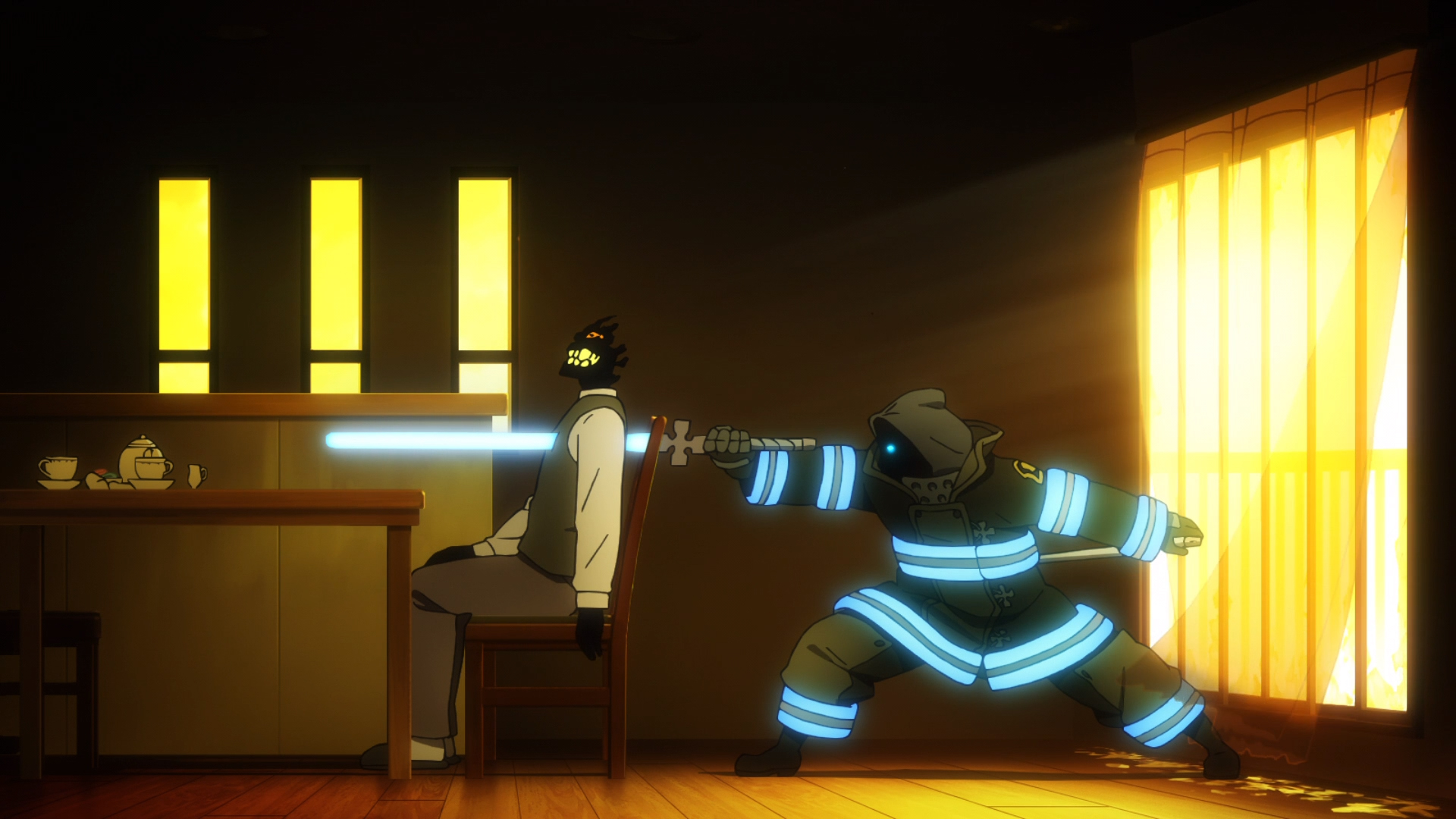
While it does have these nice touches, the story is quintessentially shonen in its structure and trappings, as it follows Shinra and the rest of Company 8 as they begin to investigate the other companies of the Fire Force and steadily reveal more of the central mystery at hand. You’ve got the initial setup followed by a training arc, before it separates itself out into distinct arcs that each focus on a different company of the Fire Force. While this structure makes it easy to watch, it often falls into the trap of using too much foreshadowing, making a lot of the plot around the core mystery of the show easy to see, so by the time you get a few episodes in, you essentially know a lot of what is going to happen as the story moves forward. This isn’t helped by it repeating the sequence showing the fire at Shinra’s home again and again to pad out time, and from the information we glean from that, you can tell it’s probably not this that really happened but rather that.
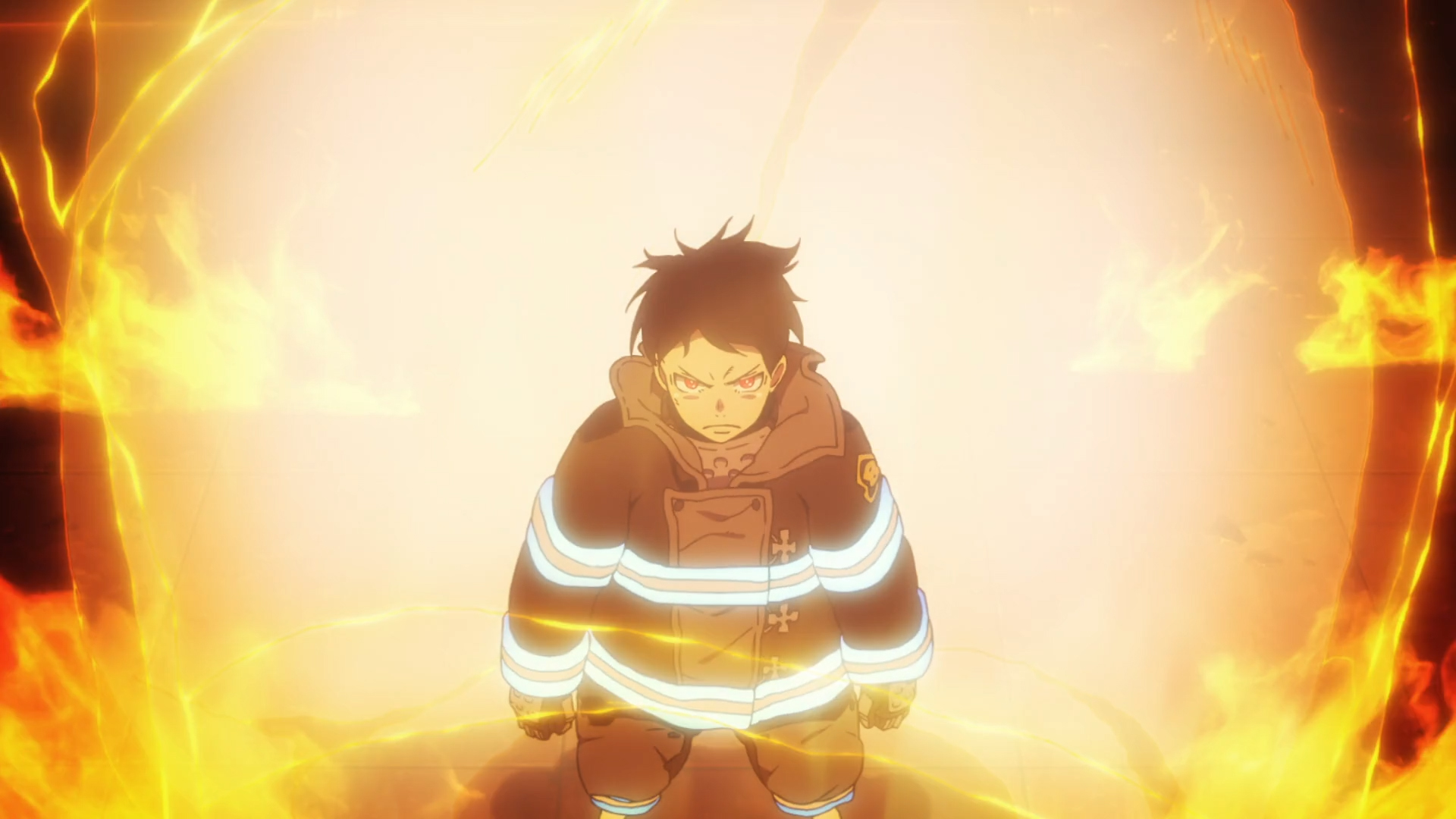
I think instead of wanting you to figure things out, it just wants you to enjoy the spectacle, as it places more focus on the action and the developing bonds between the characters, rather than revelling in the mystery behind the Infernals. While on one hand it’s a bit of a shame as the world itself is fascinating, it allows the action sequences to be one of its main strengths, with David Production using their years of experience in animating JoJo’s Bizarre Adventure well. Once a big fight starts it never really stops for breath until it is all over, while the animation is fast-paced, smooth and punchy, with some pretty striking visuals that really emphasise the power of the flame attacks of the characters. It’s also just pretty good-looking all around, and substantially improves upon the source material; for example, one scene featuring a towering cherry blossom tree made of flames would have been hard to pull off effectively on the page but here it really shines and provides a thrilling backdrop to the on-screen action.

Despite fire being the central element to the combat, there’s some good character design choices that make each character unique and offer something different to the team. Shinra is basically a homing missile who uses his fiery feet to propel himself through the air; self-styled “Knight King” Arthur makes use of a plasma sword that can not only cut through steel but can be miniaturised into a knife that makes his ability a lot more versatile; while Maki’s ability to make flame wisps can be used for both entertainment and battle. You can definitely see the hallmarks of this being an adaptation of an Atsushi Ohkubo manga in these designs, as they really tie into their abilities, while other things such as the detailed building and world design carry over from the manga well.

There are some nice moments of character development too, as the action sequences show each character’s resolve in being in the Fire Force, while there’s some goofy down-time that helps build up the relationships between the characters. The only thing I wasn’t keen on here was the over-reliance on fanservice to inject some comedy into the show, which is often extremely forced, as the story gives one of the side characters, Tamaki, a “lucky lecher lure”, which sees her frequently nonsensically losing her clothes or being put into situations where another character (usually Shinra) is grabbing her breasts or butt. With her cat-like pyrokinesis, Tamaki can and does come into her own later in the series, but I really dislike how she is treated overall, with her being played for laughs or victimised. It’s a shame, as I think the characters have got enough going between them without having to resort to such cheap gags.
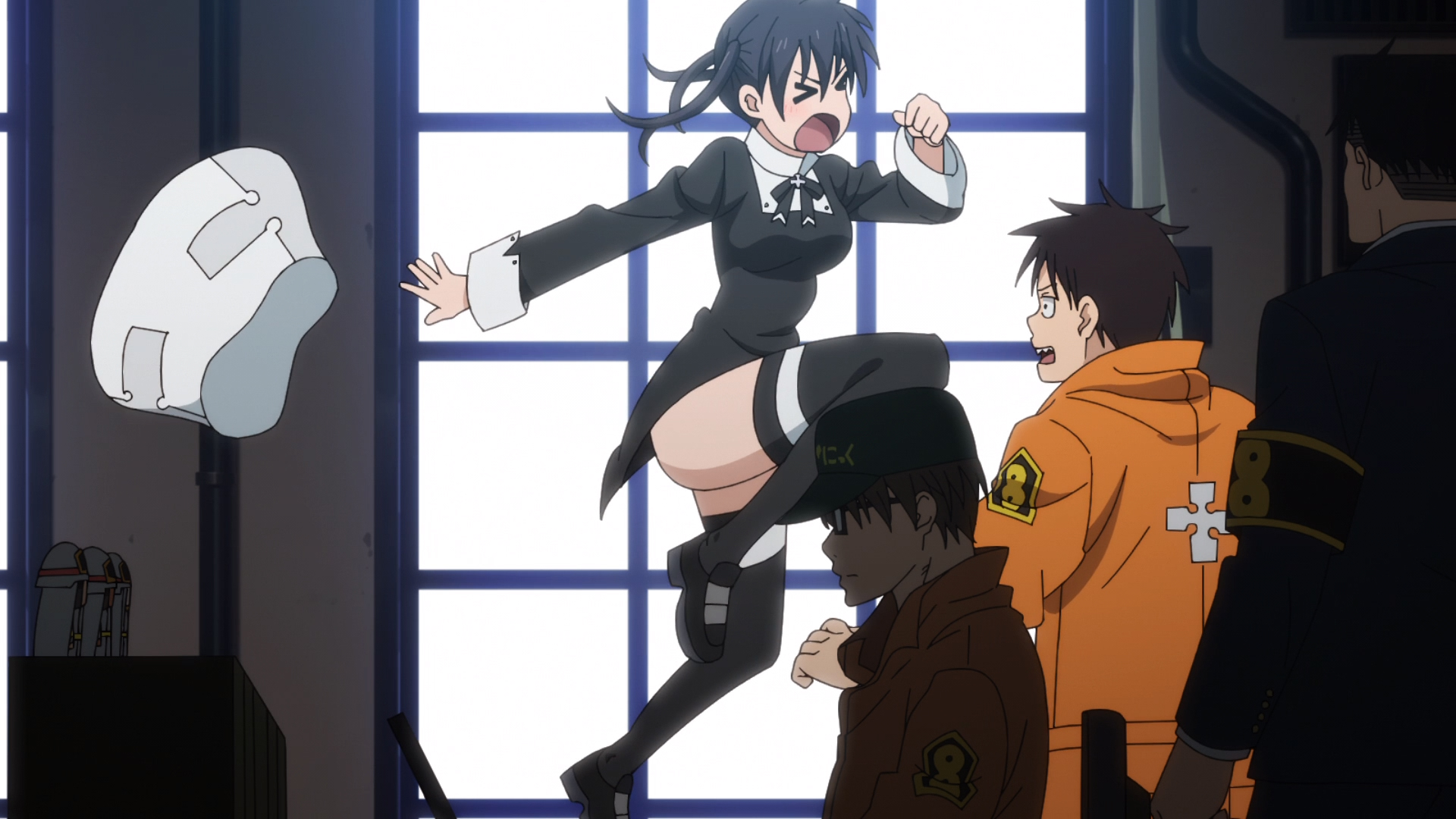
The show’s soundtrack, composed by Kenichiro Suehiro is suitably punchy, often with a big-band feel to it with some imposing brass and strings for the action sequences. Fire Force is particularly notable for popularising the band Mrs. GREEN APPLE, who provide the memorable opening theme, Inferno, while Keina Suda provides the suitably mournful-sounding ending theme, veil, which is played against the backdrop of Sister Iris’ backstory.
This Manga Entertainment release contains the first 12 episodes of the series with Japanese audio with English subtitles and the English dub. The voice acting is pretty great in both languages and voices generally fit the characters well, although some of them can sound a bit too similar to each other in the English dub, like Alexis Tipton’s Iris and Sarah Roach’s Maki.
There are also quite a few extras on the discs, with commentaries for Episodes 1 and 10, an interview and speed drawing session with manga author Ohkubo, Inside the Episode dub cast interviews for Episodes 5, 8 and 12, and clean opening and ending.

Overall, Fire Force is a pretty decent shonen action show that has some really great moments when it touches upon the danger and heroics of being a firefighter. However, its reliance on foreshadowing spoils its sense of mystery and its forced use of fanservice is completely unnecessary. While it doesn’t feel like the next big thing in shonen, fans of the genre are sure to like it.


